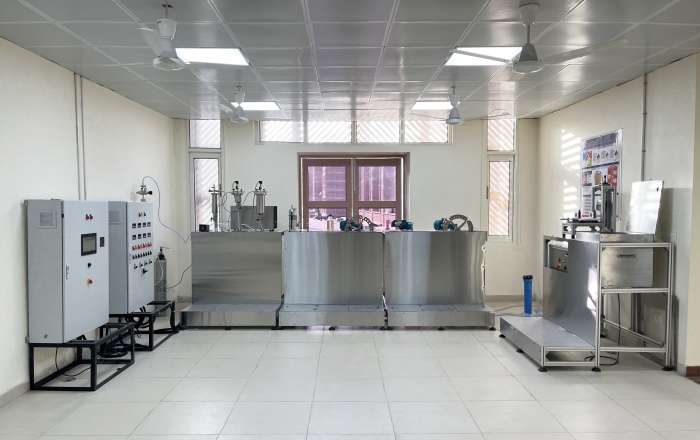
Silver Membranes
Applications
Silver Membranes can be used for a wide variety of industrial hygiene, OSHA and laboratory applications.
Analytical
X-ray diffraction (XRD); silver metal membranes make excellent substrates for XRD analysis – silver purity 99.97% — smooth surface, grayish-white color; highly reflective surface; absolute surface retention; low background noise; distinct diffraction peaks.
Scanning Electron Microscopy (EM); smooth; electrically conductive; extremely thin membrane 50 µm; easy sample preparation.
Gas
Air-borne contaminants – National Institute for Occupational Safety and Health (NIOSH) – used for industrial hygiene in foundries, glass plants, quarries, mines, ceramic manufacturing – Methods using 0.45 µm, 25 mm:
N6011 (Bromine and Chlorine)
N7500 (Silica, Crystalline)
N7501 (Silica, Amorphous)
OSHA ID142 (Quartz and Cristobalite in Workplace Atmospheres)
N7504 (Vanadium Oxide)
N7505 (Lead Sulfide)
N7506 (Boron Carbide)
N9000 (Asbestos, Crysotile)
Respirable Combustible Dust (RCD) sampling and analysis – 0.8 µm, 25 mm, mines – measurement of diesel particulate matter, evaporated hydraulic fluids, fuel oils, and compressed air lubricants by weighing and ashing.
Dopant gases for semiconductor manufacturing.
Steam, or air sterilization, autoclavable
Venting, high temperatures
Liquid
Clarification (3.0-5.0 µm); Polishing (1.2 µm); Sterilization (0.2-0.8 µm)
Intrinsically Bacteriostatic – Silver does not allow the growth of bacteria and other microorganisms.
High-Performance Liquid Chromatography (HPLC) for a clearer; steadier baseline – may rule out interference from other sources of HPLC solvents (0.2, 0.45, and 0.8 &micor;m); tolerates high temperatures; gases and aggressive liquids — Tetrahydrofuran (THF)
Viscous Fluid
Organic Carbon, inorganic, and suspended-sediment water – 0.45 µm, 47 mm, used by U.S. Geological Survey (USGS)
Lubrication oils for servomechanisms and precision instruments
Direct-line Applications with a Sprayer
High-purity fluids in semiconductor applications
Other Industrial
Chlorine Monitoring – Pulp and Paper Industry, disinfection; removal of tin and zinc in iron; chlorinating hydrocarbons; manufacturing synthetic rubber, plastics, pesticides, refrigerants; treating water and sewage
Electronics Industry – filter coolants, cleaning fluids, sterile air
Aircraft/Missile Fuels; critical fluids – resists alcohols, fuels, hydrocarbons, polyaromatic hydrocarbons (PAH), oils, alkalies, ethers
OSHA – coal tar pitch volatiles, 0.8 µm, 47 mm and 37 mm
Cold Sterilization (beverages, beer) – absolute particle-retention due to precise pore size
Soil and clay analysis
Fly Ash Sampling; Energy Research and Development Agency (ERDA)
Bacteria Sampling
Specifications
General
Coefficient of Thermal Expansion: 18.8 x 106 per °C
Thickness: 50 µm (1.97 mil)
Sterilization: Air, Autoclave, Steam
Resistivity: 1.59 x 10-8 Ωm at 20 °C (68 °F)
Specific Heat: 0.448 cal/g at 20 °C (68 °F)
| Pore Sizea | H2O Flow Rateb | Air Flow Ratec | Bubble Pointd | Max. Operating Temp.e |
| 0.2 µm | 17 | 0.35 | 13 | 204°C (400°F) |
| 0.45 µm | 40 | 0.67 | 9 | 204°C (400°F) |
| 0.8 µm | 340 | 1.4 | 7 | 204°C (400°F) |
| 1.2 µm | 460 | 2.0 | 5 | 204°C (400°F) |
| 3 µm | 690 | 2.9 | 3 | 427°C (800°F) |
| 5 µm | 870 | 5.2 | 2 | 427°C (800°F) |
Performance by Pore Size
a. Particle retention verified by bubble point pressure
b. Measured in mL/min/cm2 w/pre-filtered H2O at ΔP of 10 psid (0.7 bar); pre-wetted w/methanol
c. Initial flow rates measured in L/min/cm2 w/pre-filtered air at 10 psi (0.7 kg/cm2)
d. Measured using methanol
e. Silver membranes provide excellent filtration performance at temperatures up to 427°C (800°F)
